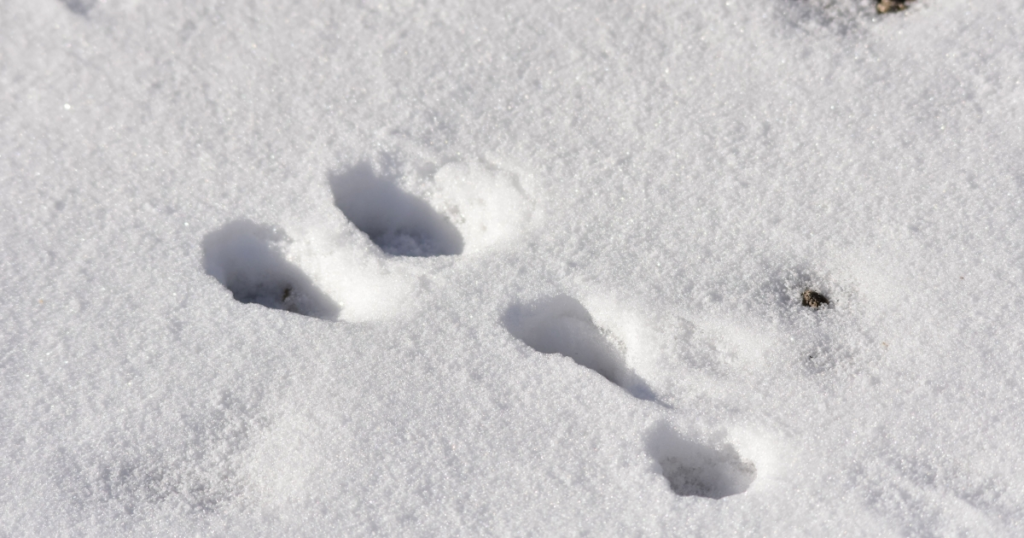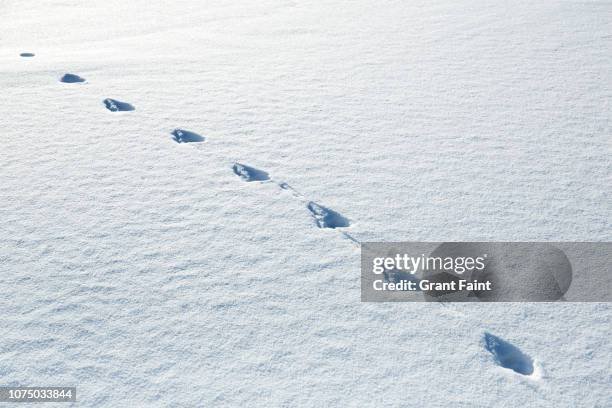Rabbit tracks in snow are like nature’s little footprints, giving us clues about where these furry animals hop and play. Whether you’re walking through a snowy forest or exploring your backyard, spotting these tracks can feel like solving a fun winter mystery.
In this blog, we’ll explore how to identify rabbit tracks in the snow, what they can tell you about rabbits, and why winter is the best time to look for them. Along the way, you’ll learn tips for following tracks and discovering more about the wildlife around you.
Rabbit Tracks in Snow: A Fun Winter Adventure
Spotting rabbit tracks in snow is a simple and exciting way to enjoy the winter season. These tiny patterns in the snow tell a story about where rabbits have been and what they were doing. If you pay close attention, you might even follow the trail to learn more about their secret winter world.
In this blog, we’ll teach you how to identify rabbit tracks, where to look for them, and what makes them unique. Winter is a great time to explore nature, so grab your boots, head outdoors, and start looking for rabbit tracks in the snow.
What Do Rabbit Tracks in Snow Look Like

Rabbit tracks are easy to spot because of their special shape. You’ll notice two large footprints in the back and two smaller ones in the front. The back paws often land ahead of the front ones as rabbits hop. This pattern looks like a “Y” or a straight line depending on how fast the rabbit was moving.
Fresh tracks are clear and easy to recognize, especially right after snowfall. Look for small, oval-shaped marks for the front feet and longer, more stretched marks for the back feet. Rabbit tracks in snow might be mixed with tiny tail marks if the rabbit sat down.
If the snow is deep, the tracks might appear softer and less detailed. Don’t forget to check nearby areas for signs like chewed twigs or droppings, which often mean rabbits were nearby.
Where to Find Rabbit Tracks in Snow
Rabbits are most active in the early morning and late evening. If you want to see their tracks, visit places like forests, meadows, or gardens. These are their favorite spots to search for food during winter.
Look near shrubs and bushes, as rabbits use these for shelter and safety. Tracks can also appear around trees, especially if there are low-hanging branches or food sources nearby. Open areas with tall grass or snow-covered fields are great places to start your search.
After snowfall, tracks are fresh and easy to see. Try walking slowly and scanning the ground for patterns. Be patient and enjoy the adventure—you never know what you’ll find!
How to Follow Rabbit Tracks in Snow

Following rabbit tracks in snow is like solving a puzzle. Start by observing the direction the tracks are heading. Rabbits often move in a zig-zag pattern to escape predators, so their paths may seem random.
Tips for Tracking Rabbits
- Walk slowly to avoid stepping on tracks.
- Look for places where the tracks suddenly disappear—this could mean the rabbit jumped or hid.
- Follow the trail to bushes, burrows, or areas with fresh chewed leaves.
Things to Keep in Mind
- Respect the rabbit’s habitat and avoid disturbing them.
- Tracks may overlap with other animals, so take your time to identify them.
- Use binoculars to spot rabbits from a distance without scaring them.
Tracking rabbits is not just fun; it also helps you learn more about their habits.
Conclusion
Exploring rabbit tracks in snow is a wonderful way to connect with nature in winter. These little footprints tell us so much about the lives of rabbits, from where they hop to how they find food. It’s like uncovering a story written in the snow, making every walk outdoors more fun and exciting.
Next time it snows, take some time to look for rabbit tracks. Bring your family or friends and make it a winter adventure. Remember to be kind to nature and enjoy the magic of discovering wildlife right in your backyard or local park.
FAQs
Q: What do rabbit tracks in snow look like?
A: Rabbit tracks have two large back prints and two smaller front prints. The pattern often looks like a “Y” or a straight line.
Q: When is the best time to see rabbit tracks?
A: Early morning or late evening is the best time because rabbits are most active then.
Q: Where should I look for rabbit tracks?
A: Check near bushes, shrubs, meadows, or forest edges. Rabbits also leave tracks around gardens and open fields.
Q: How can I tell rabbit tracks from other animals?
A: Rabbit tracks are unique because of their large back feet and hopping pattern. Other animals may leave straighter or smaller footprints.

